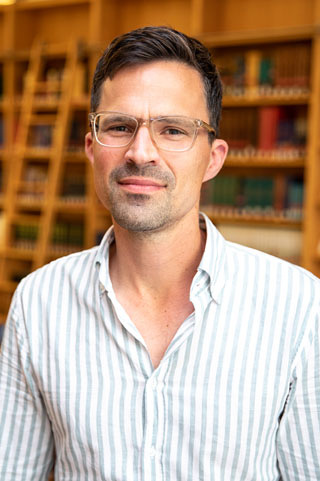I am an archaeologist motivated by interdisciplinary impulses in classical art and material culture, ecology, technology, and intercultural exchange. My research encompasses the diverse histories of socio-material entanglement across the Eurasian continent of the first millennium BC, from the mobile pastoralists of central Asia to the city-based societies of the Mediterranean world. My enduring interest is in the shifting constellations through which people and objects co-create each other and the environments in which they dwell. This includes the embodied expertise of craft as a constitutive component of using, perceiving and making sense of material culture. My current research examines skilled gestures and technological choices in crafted objects (especially pottery, metalwork and carvings in stone and wood) as traces of past future making. I seek to understand how people before the modern age of technological acceleration constructed the future as a field of possibilities and arranged their lives around daily efforts to overcome uncertainty in order to realize their hopes and aspirations. Another area of interest is the history of archaeology, especially the techniques of visual representation (such as drawing, photography and museum display) which disciplinary specialists have developed to transform artifacts into written explanations. I have participated in archaeological excavations in Ukraine, southern Russia and the Cycladic islands in Greece and lead a regular field school for BGC students at the sanctuary of Apollo on Despotiko.
Meyer’s Academia.edu Page
Meyer’s Academia.edu Page
Selected Recent Publications
Greco-Scythian Art and the Birth of Eurasia: From Classical Antiquity to Russian Modernity. Oxford Studies in Ancient Culture and Representation, Oxford: Oxford University Press, 2013.
with B. Armbruster, “Gold Artifacts from the Early Scythian Princely Tomb Arzhan 2, Tuva—Aesthetics, Function, and Technology “, in C. Meyer (ed.), Situating Eurasia in Antiquity: Nomadic Material Culture in the First Millennium BCE, Basel and Beijing: MDPI Arts, 2024.
“Why Drawing Still Matters: Connecting Hands and Minds in the Study of Greek Vases”, in C. Meyer and A. Petsalis-Diomidis (eds), Drawing the Greek Vase, Oxford: Oxford University Press, 2023.
“Rhythm and Possibility: Making Space for Ancient Futures”, Possibility Studies & Society 1 (2023).
“Domesticating the Ancient House: The Archaeology of a False Analogy”, in J. A. Baird and A. Pudsey (eds), Housing in the Ancient Mediterranean World: Material and Textual Approaches, Cambridge: Cambridge University Press, 2022.
with Ittai Weinryb (ed.), “Metalwork”, Special Issue of W86th: A Journal of Decorative Arts, Design History, and Material Culture 28. 2 (2021).
“Ancient Vases in Modern Vitrines: The Sensory Dynamics and Social Implications of Museum Display”, Bulletin of the Institute of Classical Studies 63 (2020).
“From Scythian Ethnography to Aryan Christianity: Herodotean Revolutions on the Eve of the Russian Revolution”, in T. Harrison and J. Skinner (eds), Herodotus in the Long Nineteenth Century: Ethnography, Nationalism and Disciplinary Formation, Cambridge: Cambridge University Press, 2020.
“What is the Value of Images? On the Social Significance of Time Spent Looking at Classical Art”, in C. Draycott, R. Raja, K. Welch and W. T. Wootton (eds), Visual Histories: Visual Remains and Histories of the Classical World, Turnhout: Brepols, 2019.
“Foucault’s Clay Feet: Ancient Greek Vases in Modern Theories of Sex”, History Workshop Journal 85 (2018).
with B. Armbruster, “Gold Artifacts from the Early Scythian Princely Tomb Arzhan 2, Tuva—Aesthetics, Function, and Technology “, in C. Meyer (ed.), Situating Eurasia in Antiquity: Nomadic Material Culture in the First Millennium BCE, Basel and Beijing: MDPI Arts, 2024.
“Why Drawing Still Matters: Connecting Hands and Minds in the Study of Greek Vases”, in C. Meyer and A. Petsalis-Diomidis (eds), Drawing the Greek Vase, Oxford: Oxford University Press, 2023.
“Rhythm and Possibility: Making Space for Ancient Futures”, Possibility Studies & Society 1 (2023).
“Domesticating the Ancient House: The Archaeology of a False Analogy”, in J. A. Baird and A. Pudsey (eds), Housing in the Ancient Mediterranean World: Material and Textual Approaches, Cambridge: Cambridge University Press, 2022.
with Ittai Weinryb (ed.), “Metalwork”, Special Issue of W86th: A Journal of Decorative Arts, Design History, and Material Culture 28. 2 (2021).
“Ancient Vases in Modern Vitrines: The Sensory Dynamics and Social Implications of Museum Display”, Bulletin of the Institute of Classical Studies 63 (2020).
“From Scythian Ethnography to Aryan Christianity: Herodotean Revolutions on the Eve of the Russian Revolution”, in T. Harrison and J. Skinner (eds), Herodotus in the Long Nineteenth Century: Ethnography, Nationalism and Disciplinary Formation, Cambridge: Cambridge University Press, 2020.
“What is the Value of Images? On the Social Significance of Time Spent Looking at Classical Art”, in C. Draycott, R. Raja, K. Welch and W. T. Wootton (eds), Visual Histories: Visual Remains and Histories of the Classical World, Turnhout: Brepols, 2019.
“Foucault’s Clay Feet: Ancient Greek Vases in Modern Theories of Sex”, History Workshop Journal 85 (2018).
Selected Courses
475 Art and Ecology in the Pre-Modern World
478 Greek and Roman Technology
479 Making the Future in the Past: Material Culture Approaches to Craft and Time
484 Metalwork: Technology, Value, Reception
487 Athens: Material Culture Approaches to the Classical City
490 Digital Archaeological Heritage
497 Nomadic Material Culture: Western Eurasia in the First Millennium BC
995 Craftscapes in Action: Makers and Making in the Ancient World
997 From Temples to Museums: Afterlives of Classical Statues
478 Greek and Roman Technology
479 Making the Future in the Past: Material Culture Approaches to Craft and Time
484 Metalwork: Technology, Value, Reception
487 Athens: Material Culture Approaches to the Classical City
490 Digital Archaeological Heritage
497 Nomadic Material Culture: Western Eurasia in the First Millennium BC
995 Craftscapes in Action: Makers and Making in the Ancient World
997 From Temples to Museums: Afterlives of Classical Statues











